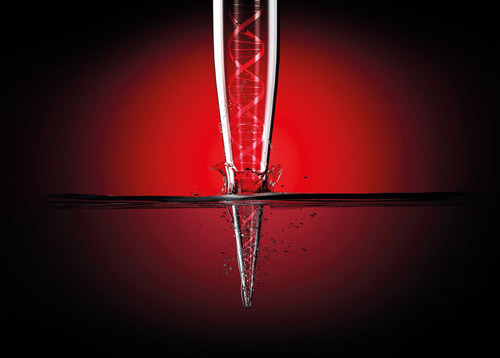September 15, 2016 (Vol. 36, No. 16)
Gail Dutton
Analytik Jena Uses Smart Modified Surfaces to Achieve DNA Extraction within a Pipette Tip
Analytik Jena’s newest extraction technology separates nucleic acid inside a pipette tip, without the use of magnetic paramagnetic particles, phenol/chloroform, ion exchangers, filter columns, or plates, centrifugation and other troublesome steps. Results, therefore, are faster and offer higher quality and improved yields.
The new extraction technology, called SmartExtraction, has disruptive potential, says Ulrich Krauss, Analytik Jena’s chief of marketing and sales. “Using smart modified surfaces,” he explains, “we have succeeded for the first time in binding nucleic acids independently of silicate material and magnetic particle suspensions.”
Launched at the analytica 2016 exhibition and conference in Munich last May, SmartExtraction technology enables researchers to extract even very low quantities of nucleic acids quickly by eliminating the additional steps associated with extraction. (Besides centrifugation, noted above, these steps typically involve magnetic particle transfer or the use of vacuum stations.)
SmartExtraction technology also promises high specificity. High binding capacities of the modified surfaces allow greater capture than beads. The technology can be automated or used manually in the lab or in the field, works with all Analytik Jena pipetting systems, and can be adapted to any other liquid-handling system.
Also in May, Analytik Jena introduced the contraAA® 800 for atomic absorption spectroscopy (AAS). This next-generation technology offers better stability and lower noise than previous instruments, along with “market-leading detection limits and superior accuracy,” according to company literature. It reduces sample preparation and dilutions by adapting itself to analyte concentrations that range from parts per billion to percentages.
The contraAA 800 also is compact, thanks to automatic atomizer switching that enables the use of a single sample compartment. A broad range of accessories also make it highly versatile. They include autosamplers, online dilutors, flow injection, and hydride generation systems.

Adding to its series of instruments for atomic absorption spectroscopy, Analytic Jena has introduced the contrAA 800. Though compact, the contraAA 800 incorporates automatic atomizer switching; two-dimensional atomizer alignment; and a stable, low-noise optical system. The instrument’s emphasis on reducing consumables costs is furthered by a new lamp design.
Focus on Innovation
Analytik Jena’s reputation was gained with the introduction, more than a decade ago, of the contrAA instrument family, which the company insists is the only commercially available series capable of high-resolution continuum source AAS. Instruments of the contrAA series replaced multiple lamps with a single xenon light source, which emits a continuous spectrum that can provide quantitative and qualitative information for any element using any wavelength.
Continued innovation is assured through the company’s steadily increasing number of patents. “Each of them includes unique innovative technologies that have significant advantages for everyday use,” Krauss points out. He cites the development of the high-resolution continuum source AAS as an example of extreme advancement.
Although many researchers and instrument companies had the same idea, commercialization eluded them. Analytik Jena succeeded in 2004, and introduced the contraAA family of instruments. “Still today, the contraAA represents the latest significant innovation in the field of spectroscopy during the past 15 years,” Krauss asserts.
Such innovation stands the company in good stead as it strengthens its international presence and builds upon its primary markets of Germany and China. It has business relationships in 120 countries, and exports account for approximately 75% of its sales revenues. All its equipment is manufactured in Germany or the United States.
Its U.S. potential was strengthened with the 2013 acquisition of UVP Group in 2013. Now integrated into Analytik Jena, California-based UVP manufactures bioimaging systems for use in proteomics, genomics, and plant and animal sciences. The company’s product line includes light sources, ultraviolet products, and other lab equipment.
That acquisition expanded Analytik Jena’s product line and facilitates access to North American markets. Efficiencies resulting from the combined sales structure, coordinated product portfolio, and technological expertise are likely to create synergies that also will benefit sales in Europe and Asia.
“In the medium to long term, we expect great potential from our market entry in the U.S., which represents both an opportunity and challenge in view of the market size and competitive environment,” Krauss says. “We also see good growth opportunities in the rapidly growing markets of Eastern Europe and Southeast Asia, particularly India.” Selected South American markets are of interest, too.

Analytik Jena’s SmartExtraction technology places Smart Surfaces within a 1 mL filter tip. With SmartExtraction, selective binding of desired nucleic acids is followed by a highly efficient elution process. The system eliminates the need for other solid phases, such as filter materials, magnetic particles, and silica.
Analytik Jena







